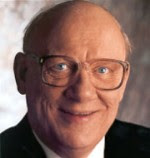Health Care You Can Live With
January 29th, 2011 It is time for a FIRST Wild Card Tour book review! If you wish to join the FIRST blog alliance, just click the button. We are a group of reviewers who tour Christian books. A Wild Card post includes a brief bio of the author and a full chapter from each book toured. The reason it is called a FIRST Wild Card Tour is that you never know if the book will be fiction, non~fiction, for young, or for old…or for somewhere in between! Enjoy your free peek into the book!
It is time for a FIRST Wild Card Tour book review! If you wish to join the FIRST blog alliance, just click the button. We are a group of reviewers who tour Christian books. A Wild Card post includes a brief bio of the author and a full chapter from each book toured. The reason it is called a FIRST Wild Card Tour is that you never know if the book will be fiction, non~fiction, for young, or for old…or for somewhere in between! Enjoy your free peek into the book!
You never know when I might play a wild card on you!
and the book:
Barbour Books (January 1, 2011)
***Special thanks to Audra Jennings, Senior Media Specialist, The B&B Media Group for sending me a review copy.***
From the time Scott Morris was just a teenager, he knew he would do two things with his future—serve God and work with people. Growing up in Atlanta, he felt drawn to the Church and at the same time drawn to help others, even from a very young age. It was naturally intrinsic, then, that after completing his Bachelor of Arts degree from the University of Virginia he went on to receive his M.Div. from Yale University and finally his M.D. at Emory University in 1983.
After completing his residency in family practice, Morris arrived in Memphis, Tennessee, in 1986 without knowing a soul, but determined to begin a health care ministry for the working poor. He promptly knocked on the doors of St. John’s Methodist Church and Methodist Hospital in Memphis inviting them to help, and then found an old house to refurbish and renovate. By the next year, the Church Health Center opened with one doctor—Dr. Scott Morris—and one nurse. They saw twelve patients the first day and Morris began living his mission to reclaim the Church’s biblical commitment to care for our bodies and spirits.
From the beginning, Morris saw each and every patient as a whole person, knowing that without giving careful attention to both the body and soul the person would not be truly well. So nine years after opening the Church Health Center, he opened its Hope & Healing Wellness Center. Today the Church Health Center has grown to become the largest faith-based clinic in the country of its type having cared for 60,000 patients of record without relying on government funding.
He is an ordained minister in the United Methodist Church and remains a board certified physician who continues to do rounds at Church Health Center.
Visit the author’s website.
Health Care You Can Live With is an astute and biblical perspective of total wellness that empowers the individual to ultimately see from Jesus’ example what it means to be human and to be intimately connected to God in that humanity. “Jesus asks us to care about what he cared about—wellness and wholeness. Healing that flows through personal care, preventive activities, medical methods, and technology announces that the kingdom of God is here,” says Dr. Scott Morris. “We cannot separate healing from the gospel message. If we’re going to do what Jesus did, and as his first century followers did, we must find some way to be involved in a ministry of healing.”
An ordained minister with twenty years as a family practice physician serving a diverse population in Memphis, the nation’s poorest major city, Morris is uniquely experienced in the challenges of our health care system today. Health Care You Can Live With offers a surprising behind-the-scenes visit into the troubles we are currently facing around the issues of health care and health care reform. With a thoughtful yet candid approach, Morris invites the reader to question what we really know about health care. Who does our health care system serve and what does it do or not do for others? And, most importantly, what should be the response of the Church—and the individual Christian?
Product Details:
List Price: $19.99
Hardcover: 256 pages
Publisher: Barbour Books (January 1, 2011)
Language: English
ISBN-10: 1616262478
ISBN-13: 978-1616262471
ISLAND BREEZES
Health care reform. We all know it’s needed, but what is a good way to go about it? Dr. Morris started the Church Health Center in Memphis. This is how real healthcare is supposed to look.
Colossians 3 lists the characteristics of how we are to live as part of a healthy lifestyle. We need to seek these virtues in our life, treating ourselves as well as others as part of the wellness process.
It’s always easier to modify behaviour when a person knows what to do. This is an excellent guidebook. Read it prayerfully.
AND NOW…THE FIRST CHAPTER:
When I was a fourth year medical student, I met a witch doctor.
It wasn’t easy. I spent a summer in Zimbabwe on a medical research project, and I took my curiosity about faith and healing with me on a few side trips. I wanted to meet a nyanga, a witch doctor, and I started asking about it as soon as my feet hit the ground in Zimbabwe. To meet a nyanga, you must have permission from a sort of nyanga association, so I asked permission. After two months of being turned down, I was running out of time. Finally I received permission just before I was due to return to the U.S. I arranged to see a nyanga on a sugar cane plantation in southern Zimbabwe, right on the South Africa border. Dressed in overalls, he rode his bicycle in from his fields to meet with me in his house.
He took me into a back room and might as well have taken me into another world—candles, incense, a zebra skin, snakeskins. I asked a few questions about the kinds of ailments people came to him with and how he treated them. In simple cases, he pulled something from his shelves of herbs and roots, and in complicated cases he consulted his ancestral spirit. When this happened, the ancestor would take over the nyanga’sbody and tell him what kind of advice to give to the patient.
And then I asked my deepest question. In two months of working in Zimbabwe, I saw that people went to the nyanga, and then immediately went to see a Western doctor. Clearly they believed Western medicine would help, but they always went to the nyanga first. Why?
The nyanga explained to me, “They come to me because I can tell them why they are sick.”
Western doctors don’t answer that question beyond a scientific-sounding answer about infections and disease. But that wasn’t what the people in Zimbabwe were asking. They sought a spiritual answer to the question, “Why am I sick?” The nyanga generally would answer, “Because you failed to honor your ancestors,” and tell patients what they should do to honor their ancestors. Then the people went to the doctor for medicine. They knew the Western doctor’s medicine would make them physically well, but it would not stop the cause of the illness, which they did not believe was physical in origin.
The Zimbabweans who went to both the nyanga and the doctor knew you cannot separate body and spirit. Treating one without the other does not make you well. Don’t get me wrong. I’m not saying every physical symptom results from some failure in a person’s life. I am saying being well is about more than fixing a broken part of your body. The dominant approach to health care in the United States concerns broken bodies more than broken lives. We’ve developed systems that put people through hoops to get care but too often don’t make them healthier.
Our system says, “Keep Out.”
Eve was forty-six when her life shattered. She had a good job, a happy family, and no significant history of illness. Then one night her chest started to hurt and she had a heart attack. An emergency bypass operation saved her life, but not the circulation in her legs. In a matter of days, surgeons amputated both her legs. During that one prolonged hospitalization, Eve used up her entire lifetime insurance benefit. Clearly she was going to have ongoing medical needs, so she applied for the state’s version of Medicaid—and was turned down because she had health insurance. Somehow it didn’t matter that she had no more benefits available under her policy.
Laura was two years old and asleep on her mother’s lap when I met her. Laura had IGA deficiency, a disease of the immune system that made her susceptible to infections. Her mother, Jill, brought Laura in because she seemed to have a sinus infection. Jill calmly explained why she had come to the Church Health Center. A number of years earlier, her husband had a relationship with a woman who later turned out to be infected with HIV. Now he was in the final stages of AIDS. When he became unable to work, Jill went back into the workforce. Getting a job—even without insurance benefits—meant she lost Medicaid coverage for herself and Laura, whose IGA deficiency required frequent medical attention.
Frank, a construction worker, fell off a ladder and hurt his shoulder. Even though he was in excruciating pain, he waited four days to see a doctor. It didn’t take ten seconds to see what the problem was when he turned up in my exam room. An x-ray confirmed he had broken his collarbone and would need surgery to give him the use of his shoulder and arm. When I told him, he started to cry. “How can I afford to pay for this, especially when I can’t work?”
Health care is a mess. People who need help can’t always get it. Financial repercussions, not health repercussions, dominate their decisions. People like Eve and Laura and Frank are not so far away from you. Maybe you know somebody like this. Maybe you are somebody like this.
We have a health care system that says, “Keep Out.”
Keep out if you’re poor, but not poor enough.
Keep out if you are not part of an employer’s insurance plan.
Keep out if a computer can’t automatically assign you neatly into a category.
Keep out if you are an illegal immigrant.
The question of health care reform pushes buttons in a lot of people—including me. If you’re like most people, you wonder if all the talk about the health care crisis will bring any meaningful change. You have real life questions and you want to know how legislation on such a major issue affects you and your family.
“Does this mean I can stop paying so much in premiums?”
“Are they trying to tell me what doctor I can see?”
“They’re not going to reduce my coverage, are they?”
“Can I keep my kids on my policy?”
“How much is this going to cost me?”
“Why should I have to buy insurance if I don’t want to?”
If we want lasting change in our health care system, however, we have to step back and ask the bigger questions.
Why is our health care system so broken in the first place? If we don’t come face to face with what’s broken, we can’t fix it.
Who benefits from changes to the system? Will Eve and Laura and Frank be better off? Will you?
What does “health care” even mean?
Are more people going to be more well, or will more people simply have cards in their wallets?
Opinions on these questions are all over the board. You’re going to find out what I think as you continue to read this book. History teaches many lessons, and it even sheds light on the kind of care doctors offer you. Whether you are employed or unemployed, insured or uninsured, disease-free or living with a chronic condition, the “system” that comes out of our history affects your health care.
When the Church Health Center opened in 1987, twenty-six million Americans were uninsured. Today that number is close to fifty million, and the Congressional Budget Office estimates it could grow to fifty-four million by 2019. If all goes perfectly, the health care reform legislation signed into law in 2010 will be fully in place by 2019 and provide coverage for thirty-one million uninsured Americans. That still leaves twenty-three million people without insurance. On top of that, millions more—perhaps as many a hundred million—will be underinsured as costs continue to rise. The government subsidies offered under the legislation are unlikely to be sufficient for full-blown insurance coverage. High deductibles essentially will mean the insurance plan has little effect on day-to-day health care. Steep out-of-pocket costs will still deter people from seeking care, even if they have insurance. If a plan does not reimburse physicians adequately, patients will have trouble finding doctors who accept the plan. And although a policy may kick in for a major illness, individuals still will bear costs they may never recover from financially. More than 60 percent of bankruptcies are related to medical bills, and three-fourths of these people have health insurance when they become ill.
People who cobble together income from multiple part-time jobs will remain uninsured. The new insurance plans in the 2010 legislation will remain out of reach financially. Certainly the immigrants among us will qualify for nothing. No matter what your views are on immigration, if someone who cleans our houses or cuts our lawns gets sick, we have an obligation to provide care.
We would all agree that the 2010 legislation launches us out into a brave new world of health care. Nothing about it is certain. Jesus said, “The poor will always be with you.” So far he has been right. If he ever asks me, “Where were you when I was poor and sick?” I want to be able to answer, “I cared for you as best I could.”
Doctors learn to keep out.
Doctors learn to practice medicine by taking a medical history and asking questions around the symptoms the patient describes. Ninety percent of the diagnosis is based on what the patient tells you. The doctor formulates an opinion about what is causing the problem, and then performs a physical exam to collect more information about the suspected cause. Eventually diagnostic tests may confirm what the doctor thinks.
This process also says, “Keep Out.”
Keep out of my heart.
Keep out of my sorrow, my stress, my fatigue, my relationships.
Keep out of my private space. Just fix what hurts.
Eve, the woman who lost her legs after a heart attack, rocked continuously in her wheelchair the first time she came to see me in my practice at the Church Health Center. I tried to ignore it, but her husband asked, “Do you think you can do anything about her constant rocking?” I spoke to our pastoral counselor, and right away he said, “Often when people rock, it means they want to be held.” He was absolutely right. Eve rocked herself because she felt deformed and unlovable and unable to interact physically with her family as she always had. When I talked to Eve’s husband again, he immediately took her in his arms. She never rocked in my presence again.
Every day, every single day, doctors tell patients there’s nothing wrong because they find no physical root for patient complaints. If we can’t see a spot on a screen, a squiggle of dye on a test, a crack in an x-ray, or a level in the blood, then nothing is wrong. The person is “healthy.” Whatever is amiss is not a matter for the health care system. Probably this happens to you. The doctor reassures you that you are “fine,” but you wonder why you don’t feel fine. Plenty is wrong. Spiritual and emotional issues manifest in physical ways. But our health care system draws a line and says, “Keep Out.”
Palmer was ninety years old when he developed pneumonia and was admitted to the hospital in the middle of the night. When he stopped breathing, someone called a code, did CPR, resuscitated him and put a tube down his throat to keep him breathing. For two weeks, he lay in a bed in the intensive care unit, where they never turn the lights off, with a tube down his throat.
When a loved one finally asked, “Palmer, do you want a kiss?” this ninety-year-old man was ready to yank out the tube. The health care he needed at that moment—clearly he was dying—was not technology, but human contact. He wanted that kiss more than anything. But for two weeks the heath care system had said “Keep Out” to his basic need.
Change means letting go.
Health care is a mess. People want change.
But to what?
Nobody wants the government deciding when you’re going to die. That’s not what health care reform is about. It’s not about how many people carry a card imprinted with the name of an insurance company. It’s not about living two weeks longer in a brash ICU. It’s not about access to extreme technology in every small town.
Efforts at health care reform fail because they avoid the essential questions of wellness. The starting point is off kilter. Our health care system is built on the premise of waiting for people to break in some way and then come through our doors, where we will use our technological wizardry to fix them. “Access to health care” has come to mean having a card that lets you get through those doors. For too long we have accepted this definition of health care.
That’s not health care. Caring for health means attending to the things that keep you well long before you break and need the door to technology. And believe it or not, doctors are only one part of true health care.
Change means getting used to the unfamiliar. For many people it’s easier to clutch a tight fist around what is old and broken than to open our hands to receive something new and different. This happens with health care, even if the care we currently receive doesn’t make us healthier. We hang on to what we know for all the wrong reasons.
In the next couple of chapters, we’ll take a look at some history and attitudes that got us where we are today. Then we’ll delve into what you can do to bring change to your own health care. Once you see the bigger picture of what’s wrong with our health care system, you’ll see you don’t have to settle for the status quo.
It’s time to let go of a broken health care system and venture into real health.













